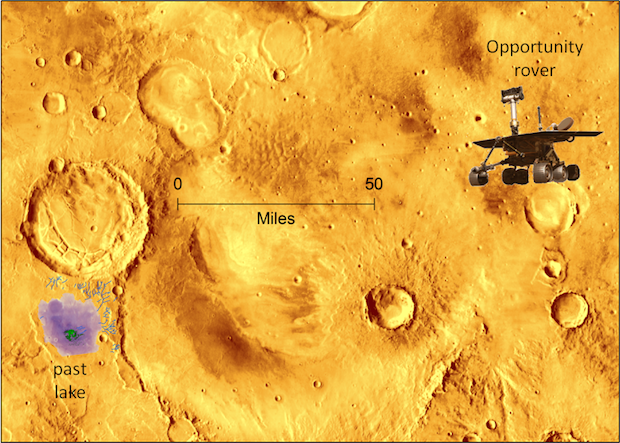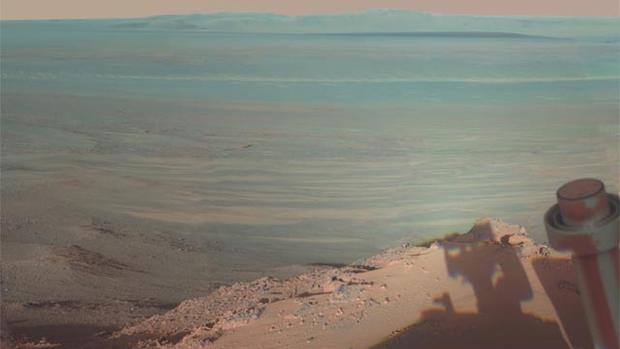Lake may have held last signs of life on Mars
The last vestiges of life on Mars may have occurred in a slightly salty lake about 3.6 million years ago.
The findings, published in the journal Geology, came out of an examination of an 18-square-mile chloride salt deposit in the Meridiani region near the Mars Opportunity rover's landing site. As seen on Earth in locations such as Utah's Bonneville Salt Flats, large-scale salt deposits are considered to be evidence of evaporated bodies of water.
What surprised Brian Hynek, a research associate at the Laboratory for Atmospheric and Space Physics at CU-Boulder and lead author of the study, was just how young the 11.5-square-mile lake appears to have been. The researchers used digital terrain mapping and mineralogical analysis of the features surrounding the deposit to date the lake.
"This adds to the story of when water was around," Hynek told CBS News, adding they are unable to determine when it disappeared due to the small size of the deposit.
"There are hundreds of these (chloride salt deposits). We don't know how they formed or when they formed," he said. "This answered both of those questions. This formed in a lake, evaporating away very clearly. We can't say that for the other ones ... Then, the age. We thought they were much older than this."
Until now, scientists believed that Mars was only warm enough to sustain large amounts of surface water from 3.8 billion years until 3.7 billion years ago.
As Mars' atmosphere was swept into space over millions of years, it lost the pressure and heat needed to keep water liquid. That caused the ocean to shrink and recede northward, with the remaining water condensing and freezing over the north and south poles and giving Mars the ice caps seen today.
Hynek said it still remains a mystery why this lake as deep as 450 feet managed to survive when so many other bodies of water had long ago disappeared.
"This lake that is younger, how do you have a thicker atmosphere at this later time on Mars? That is still an open question," Hynek said, adding there could have been other young lakes like this one on the Red Planet.
"It could be related to a large volcanic eruption or something that put enough water into the atmosphere to make lakes like this one," he said. "Potentially, if you had a big impact from a comet or an asteroid, that could have generated a temporary atmosphere that could have rain and supported lakes on the surface."
Hynek's colleague Mikki Osterloo and several other scientists first discovered the hundreds of salt deposits in 2008. Hynek joined the search in 2010 and they then zeroed in on the one site in the Meridiani region.
Among the questions still to be answered are whether the lake did support life. A good indicator of that was the salinity of the lake, which was about 8 percent of what you would find in Earth's oceans.
"By salinity alone, it certainly seems as though this lake would have been habitable throughout much of its existence," said Hynek, who is also director of the CU Center for Astrobiology.
"That is the million dollar question. Did Mars ever have life?" he said. "If it did, was it like Earth's life or was it some totally different life form? At least, all life on Earth needs water. This is one of the key requirements and here is a place fairly late-stage in Mars' history where there was water around."

